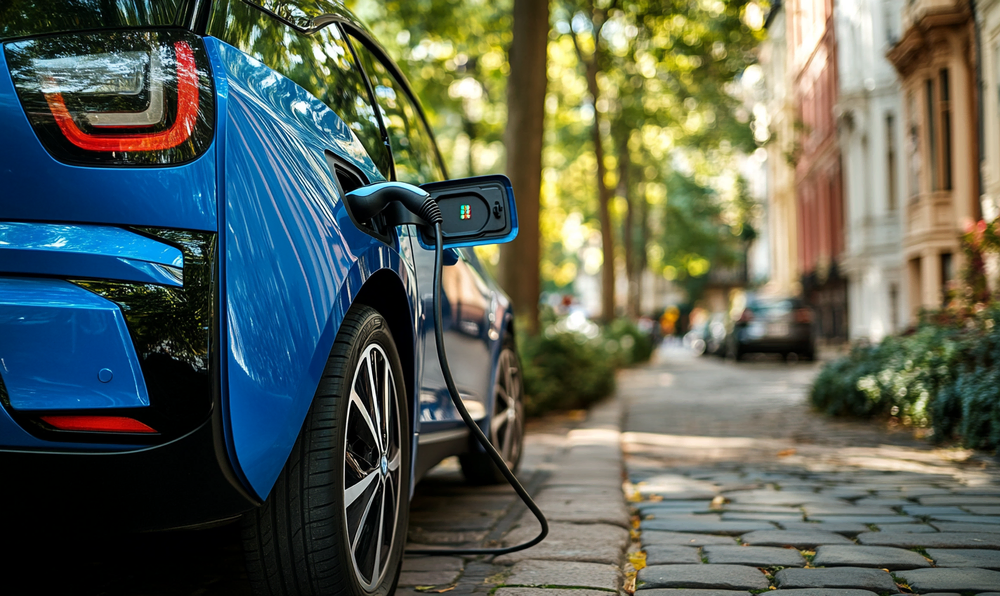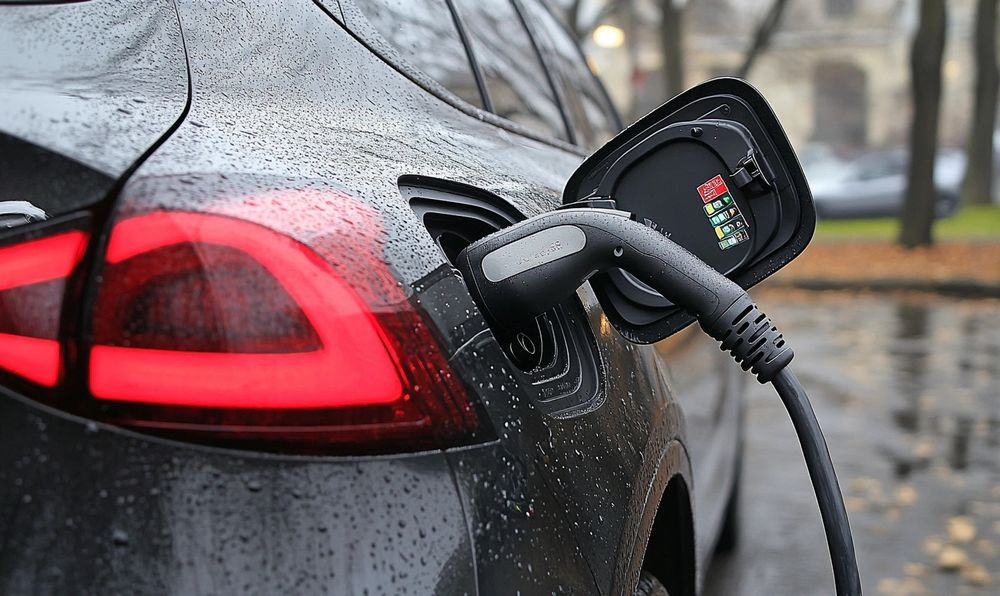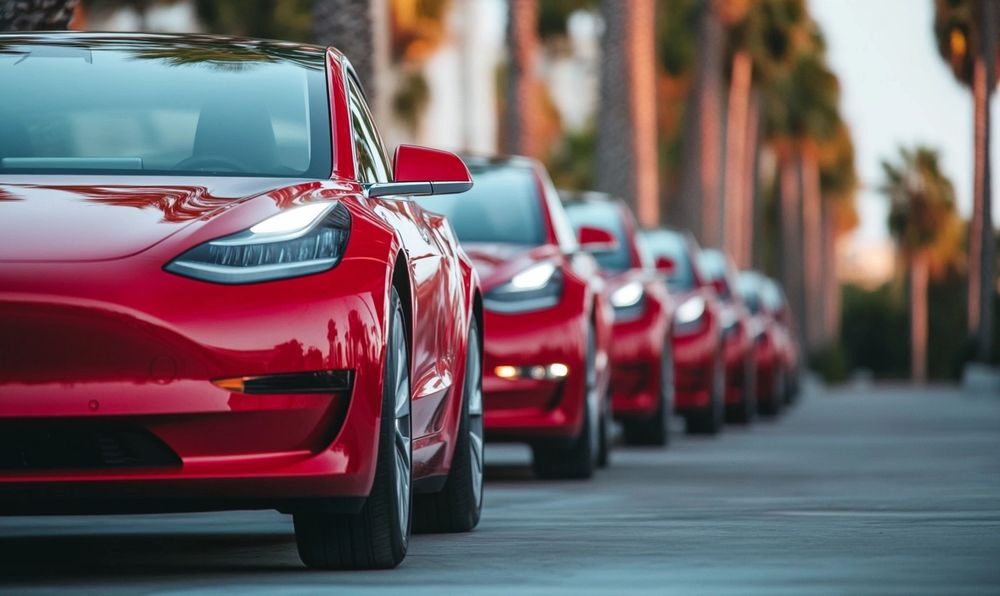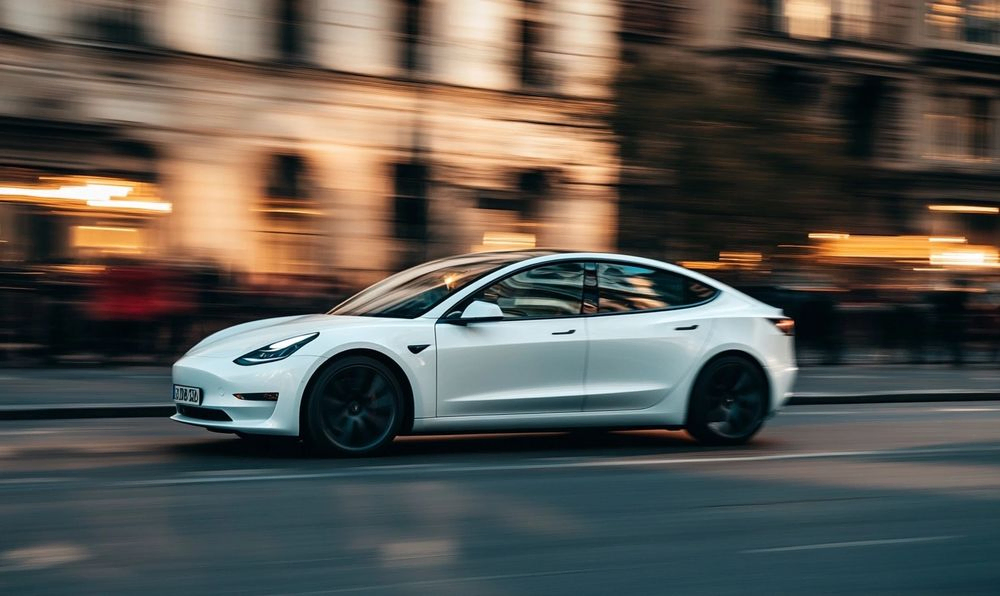
The automotive landscape is rapidly evolving, with electric vehicles (EVs) taking center stage in transitioning to sustainable transportation. As we venture into this electrifying world, one of the most prominent categories is Battery Electric Vehicles (BEVs). Understanding Electric Cars – BEV Advantages & Disadvantages provides essential insights for eco-conscious consumers and tech enthusiasts.
Battery Electric Vehicles (BEVs) are designed entirely around electric propulsion, utilizing large battery packs that store energy for efficient performance. With a growing emphasis on environmental sustainability, the benefits of BEVs are becoming impossible to ignore. However, alongside their numerous advantages, there are also significant disadvantages.
In this blog post, we’ll dissect the pros and cons of electric cars, shedding light on the practicality, effectiveness, and challenges of adopting these innovative machines. From their positive impact on reducing carbon emissions to the considerations of charging infrastructure, our exploration promises to equip you with the knowledge needed to make informed decisions in the journey toward an electric future.
Join us as we uncover what it truly means to navigate the world of BEVs and help you grasp their advantages and disadvantages.

What are Battery Electric Vehicles (BEVs)?
Have you ever wondered what those sleek, quiet rides zipping by really are? They are Battery Electric Vehicles, or BEVs for short. Unlike traditional cars, BEVs run purely on electricity, meaning no gas, oil changes, or tailpipe emissions. It’s like comparing a sprinting rabbit to a lumbering elephant!
The Heart of the Matter: The Battery
The magic lies in their batteries. These are the lifeblood of BEVs and come packed with energy. A typical BEV battery can take anywhere from 100 to 370 miles on a single charge. Imagine the freedom! No more gas station stops every few hundred miles. Just plug it in at home, and you’re good to go!
How Do BEVs Stack Up? Let’s Break It Down
When chatting about BEV advantages, it’s hard not to get excited:
- No emissions = cleaner air. Can you feel that fresh breeze?
- Less maintenance than gas cars. A win for your wallet!
- Fun driving experience with instant torque. Zoom-zoom!
But hold on – it’s not all rainbows and sunshine. BEV disadvantages also come into play:
- Charging takes time – it’s not as quick as a gas fill-up.
- , Some models have a limited range, such as running out of battery on your phone.
- Higher upfront cost – but think of it as a long-term investment!
Why People Are Embracing BEVs
What’s driving the surge in BEV popularity? It’s the apparent pros and cons of electric cars. Many folks appreciate the environmental benefits and the hands-off maintenance. Plus, with incentives popping up everywhere, you’re getting a treat for saving the planet!
Diving Into the BEV Benefits
Let’s highlight some of the best parts:
- Quiet rides – less noise pollution means peaceful drives.
- Tax credits can lighten the financial load.
- Low operational costs make your bank account smile.
- Home charging convenience = more time for you!
Isn’t it fascinating how these battery-electric vehicles can revolutionize driving? The combination of technology and sustainability makes BEVs not just vehicles but a lifestyle shift. Are you ready to hop on this electrifying journey?

BEV Advantages: How They Benefit the Environment
Cleaner Air for Everyone
Imagine stepping outside and taking a deep breath of fresh air. Sounds nice, right? With battery electric vehicles (BEVs), that’s becoming a reality! Since BEVs run entirely on electricity, they don’t emit harmful exhaust gases. Think about all the smog-filled cities—we can reduce that through the widespread use of electric cars!
Reduced Greenhouse Gas Emissions
And speaking of fresh air, let’s talk about the planet. When you drive a BEV, you’re cutting down on greenhouse gases. Studies show that, over their lifetime, BEVs emit significantly less CO2 than traditional gas-powered cars. It’s like choosing to plant a tree every time you hit the road. It makes you feel good.
Less Noise Pollution
Have you ever been stuck in traffic, surrounded by honking cars? It can be a headache. The great news is that BEVs are much quieter than their gasoline counterparts. They glide down the road like a whisper, making your ride eco-friendly, peaceful, and serene. Who wouldn’t want to escape from all that noise?
Types of Renewable Energy Sources
Now, let’s talk energy. BEVs can be charged using renewable energy sources like solar or wind. When you plug in your car at home, you could be drawing power from the sun! It’s like driving in the sunshine. Sounds pretty magical, right?
Key Takeaways on BEV Benefits
- No harmful emissions.
- Lower overall greenhouse gas output.
- Quieter driving experience.
- Renewable sources potentially power it.
Wrap Up the Good Stuff
Sure, BEV disadvantages exist, but what’s life without a little challenge? When you think about the pros and cons of electric cars, remember that driving a BEV could substantially impact our environment. Act now, and your commutes can contribute to a cleaner, greener future for everyone!

BEV Disadvantages: Understanding the Challenges
The Range Dilemma
One primary concern with Battery Electric Vehicles (BEVs) is range anxiety. What if you run out of juice in the middle of nowhere? Usually, a BEV can travel about 200 to 300 miles on a full charge. That’s great for a trip to the grocery store or around town, but what about those long road trips? You may calculate every mile left like a mathlete in a championship round.
Charging Time Woes
Let’s face it: charging a BEV takes time. While a gas tank fills in just minutes, restoring your electric car’s battery can take a while—sometimes up to several hours if you use a standard outlet. Fast chargers exist, but they’re not as ubiquitous as gas stations. Who has that kind of patience? You might feel stuck in a dentist’s waiting room when you only want to hit the road!
Cost Considerations
Now, let’s talk money. BEVs can be pricier upfront compared to traditional vehicles. While BEV advantages include lower running costs, the initial investment can be a bit of a shocker. You might need to borrow from your rainy day fund or consider financing options. Plus, if you live in an apartment, installing a home charger can add another layer of expense. It’s like being in a never-ending game of Monopoly with the worst luck.
Limited Model Choices
BEVs are becoming more popular, but the selection is still limited compared to regular cars. If you have a specific color or model in mind, you might be left feeling like you’re shopping in a one-size-fits-all world. You could even miss out on that sleek SUV or the sporty coupe you’ve been dreaming of!
Environmental Impact of Batteries
Also, keep in mind the environmental impact of batteries. Producing them can be harsh on Mother Earth, and mining materials like lithium isn’t as clean as one might hope. So, while BEV benefits, like lower emissions, are fantastic, the battery production side can feel a bit counterproductive.
Pros and Cons Recap
- Pros: Zero tailpipe emissions, lower fuel costs, and buyer incentives.
- Cons: Limited range, long charging times, higher initial costs, and fewer models available.
So, while there’s a lot to love about electric cars, it’s clear that the pros and cons of electric vehicles deserve a good look. Understanding these BEV disadvantages can help you make a more informed decision. Wouldn’t you want to know what you’re getting into before making a big purchase like this?
Pros and Cons of Electric Cars: A Comprehensive Overview
Unpacking the Good and the Bad
Jumping into the world of electric cars, or battery electric vehicles (BEVs), can feel like a thrilling ride. But as with any incredible journey, there are some bumps. So, what are the problems and benefits of electric cars? Let’s break it down!
BEV Advantages
First off, let’s talk about the shiny side of things! Here are a few significant BEV advantages:
- Environmentally Friendly: Zero emissions mean cleaner air. How awesome is that?
- Low Running Costs: Less spending on fuel and maintenance. Your wallet will thank you!
- Incentives: Tax credits and rebates can make buying a BEV a sweet deal.
And who wouldn’t enjoy the quiet, smooth ride of a BEV? It’s like cruising on a cloud!
BEV Disadvantages
But it’s not all sunshine and rainbows. Let’s dig into some BEV disadvantages that might cause you to hit the brakes:
- Range Anxiety: Many worry about how far they can go on a single charge.
- Charging Time: While gas-up times are quick, charging can sometimes take a while.
- Initial Cost: The upfront price of battery electric vehicles can be higher than traditional cars.
Imagine fueling your car but having to plan it around coffee breaks! Sounds frustrating, right?
What Does All This Mean?
So, when diving into the pros and cons of electric cars, it’s really about balancing what matters most to you. Do you prioritize the environment and running costs? Or do you need to consider charging times and range? Luckily, many folks see the benefits of BEV and can make the shift. It’s all about what fits your lifestyle!
Understanding these aspects makes the journey smoother whether you’re a newbie or an EV enthusiast. Are you ready to embrace the electric lifestyle?
Cost of Ownership: Analyzing BEV Benefits
Understanding the Financial Picture
Let’s talk about money. Everyone is keen to know the BEV benefits of owning a vehicle. You might think, “Will I save in the long run?” The answer is a resounding yes for many folks! Battery electric vehicles (BEVs) typically have lower operational costs than their gas-guzzling counterparts.
Lower Day-to-Day Expenses
Imagine leaving the gas pump behind! Here’s a quick breakdown of potential savings:
- Fuel Costs: Charging a BEV often costs less than filling up a gas tank. Who wouldn’t love that?
- Maintenance: Seriously, fewer moving parts mean fewer repairs. Less stress and more cash in your pocket!
- Tax Incentives: Many governments offer excellent incentives for BEV buyers. That’s free money, folks!
Battery Longevity and Resale Value
Now, let’s chat about the elephant in the room—battery life. Many people worry about BEV disadvantages related to battery issues. Batteries indeed degrade over time. But most batteries last a decade or more, and manufacturers are improving rapidly. Plus, as technology evolves, resale values are expected to rise.
The Emotional Appeal
Think about how driving a battery-electric vehicle makes you feel. Not only are you saving money, but you’re also contributing to a cleaner planet. That’s a win-win! It’s like planting a tree and knowing it’ll blossom year after year. You get to enjoy your ride while feeling good about your choices.
The Balancing Act: Weighing Costs and Benefits
Of course, we can’t ignore the pros and cons of electric cars. Initial purchase prices for BEVs might seem daunting. But remember, those upfront costs can be offset by savings in fuel and maintenance over time. Consider what you value more: a lower monthly payment or peace of mind knowing you’re reducing your carbon footprint.
In essence, owning a BEV involves a bit of balancing. You’ll likely gain more financially and emotionally than you initially invested. Plus, you’ll be driving into a future that’s not just eco-friendly but wallet-friendly, too!
Charging Infrastructure: Key Considerations for BEV Users
Understanding Your Charging Options
So, you’ve leaped a battery-electric vehicle (BEV). Congrats! But now comes the big question: where will you charge it? It’s one thing to enjoy those BEV benefits, like zero tailpipe emissions and lower fuel costs, but you also need to consider how and where to power your car up.
Home Charging: The Convenience Factor
Let’s talk about home charging first. Imagine rolling into your driveway after a long day and plugging in your car. Does that sound heavenly? It sure does! Setting up a home charger means forgetting about those late-night gas station runs. Just plug in while you watch your favorite show.
- Ensure you have a level 2 charger for faster charging times.
- Check your electrical panel to see if it can handle the new load.
- Schedule charging during nighttime to save on electricity costs.
Public Charging Stations: A Road Trip Essential
But what happens when you’re out and about? You can’t just run on fumes! That’s where public charging stations come into play. Finding them is more accessible these days, with apps helping to locate the nearest spot. Here’s what to remember:
- Look for fast-charging stations to fill up your battery in under an hour.
- Keep track of your favorite charging spots so you’re never caught off-guard.
- Know the charging type – some stations are more compatible with your BEV than others.
The Cost of Charging: A Surprise or Not?
You might wonder, “Is charging my BEV going to break the bank?” The simple answer is that it depends. Overall, charging costs are typically lower than gas prices. Just imagine using the money you save for a mini-vacation instead!
However, be aware of fees charged at public stations. Some may have hidden costs or membership fees, like those surprise add-ons when booking a flight.
Planning for the Future
<pAs BEVs become more popular, the charging network is increasing. Cities are investing in more stations. That’s good news for all EV lovers! Plus, with technological advancements, charging speeds are only getting better.
So, strap in and get ready for your BEV adventure! Navigating the charging landscape is part of the ride, and it’s fantastic to be a part of the future of driving.
Future Trends in Electric Vehicles and BEVs
Ever wonder what the future holds for electric cars and their shiny cousins, Battery Electric Vehicles (BEVs)? Well, buckle up because it’s going to be an exciting ride!
Innovative Battery Technology
One of the first trends to watch is battery technology. Imagine charging your car in minutes instead of hours! Companies are investing in solid-state batteries. They’re lighter and safer and could significantly boost your car’s range. Sounds incredible, right?
Widespread Charging Stations
And then there’s the charging infrastructure. Think of it like expanding a highway and making road trips hassle-free. More charging stations will pop up in urban areas, shopping centers, and even at your favorite café. Charging your BEV while grabbing a coffee will become a part of your routine.
Greater Variety of Models
Have you noticed how some car companies are rolling out diverse styles of BEVs? From sporty coupes to family-friendly SUVs, the options seem endless. It’s like going to your favorite ice cream shop—there’s something for everyone!
Cost Efficiency
Now, let’s talk money. With advancements in manufacturing, the cost of BEVs is expected to decrease. This means more people could afford to buy them. You could end up spending less on gas and maintenance! It’s like finding a treasure chest full of gold coins.
Sustainability on the Rise
As awareness of climate change grows, consumers will flock towards more sustainable choices. BEVs leave a smaller carbon footprint compared to their gas-guzzling counterparts. You can feel good knowing you’re doing your part for Mother Earth with every mile you drive.
Smart Technology Integration
What if your car could alert you of traffic jams or suggest the fastest route? Thanks to intelligent technology, that’s on the horizon. BEVs will become even more integrated with our digital lives—it’s like turning your car into a smartphone on wheels!
- Innovative battery tech for faster charging
- More charging stations everywhere
- Diverse BEV models catering to every taste
- Reduced costs, making BEVs more accessible
- Increased focus on eco-friendly driving
- Enhanced innovative features for more straightforward navigation
So, are you excited about what’s next? The landscape of electric vehicles and BEVs is changing fast, and it’s worth watching closely!
Conclusion
In conclusion, understanding the intricacies of electric cars, particularly battery electric vehicles (BEVs), is essential for making an informed decision about your next vehicle. While the BEV advantages, such as zero tailpipe emissions and lower operating costs, make them an attractive option for environmentally conscious drivers, weighing the BEV disadvantages, including limited range and longer charging times, is equally important.
Potential owners should assess their specific needs, such as daily commute distance and access to charging stations when considering the pros and cons of electric cars. BEVs’ benefits extend beyond personal use; they reduce pollution and dependence on fossil fuels, playing a crucial role in the fight against climate change.
Ultimately, the landscape of electric vehicles is rapidly evolving, with technological advancements promising to address many of the current challenges. By staying informed, readers can better navigate the world of electric cars and make choices that align with their lifestyle and environmental values.
Frequently Asked Questions (FAQs)
What are the main BEV advantages?
BEV advantages include zero tailpipe emissions, lower operating costs, and reduced maintenance due to fewer moving parts. Government incentives and a growing charging infrastructure also benefit battery electric vehicles.
What are the BEV disadvantages?
BEV disadvantages include limited driving range compared to traditional vehicles, longer refueling times, and potential issues with battery degradation over time. These factors can impact the overall ownership experience.
What are the pros and cons of electric cars?
The pros include lower emissions, cost savings on fuel, and reduced maintenance. The cons often encompass initial purchase cost, limited driving range, and charging infrastructure challenges.
What are battery electric vehicles (BEVs)?
Battery electric vehicles (BEVs) are powered entirely by electric energy stored in batteries. Unlike hybrid or conventional cars, they do not have internal combustion engines, which makes them 100% electric.
What are the benefits of BEVs?
The benefits of BEVs include environmental friendliness with zero emissions, reduced noise pollution, and potential fuel and maintenance cost savings. They are also eligible for various incentives and rebates.
How far can a BEV typically travel on a single charge?
The range of a BEV can vary significantly depending on the model. Most modern BEVs can travel between 200 and 370 miles per charge, with some high-end models offering even greater distances.
Are electric vehicles suitable for long-distance travel?
Yes, electric vehicles can be suitable for long-distance travel, especially with the growing network of fast charging stations. Planning routes with charging stations can mitigate range anxiety during long trips.
What is the lifespan of a BEV battery?
A BEV battery’s lifespan typically ranges from 8 to 15 years, depending on usage, maintenance, and technological advancements. Most manufacturers offer warranties for battery health during this period.
How do charging options for BEVs work?
BEVs can be charged at home using a standard wall outlet or a dedicated home charging station. Public charging stations are also available, offering varying charging speeds, from slow charging to fast charging options.
Can I get government incentives to purchase a BEV?
Many governments offer incentives for purchasing BEVs, such as tax credits, rebates, and access to carpool lanes. The availability and amount of these incentives vary by region.